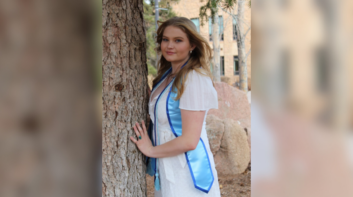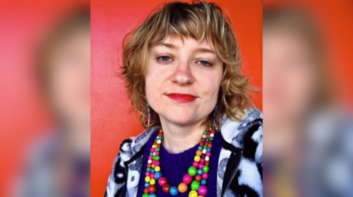When she looks up at her six-foot, one-inch son Gavin, Colleen McGregor sees a “very neurotypical” 18-year-old. But Gavin has multiple cognitive disabilities that, while subtle and don’t contribute to any behavioral challenges, left him developmentally behind his peers by about two years.
McGregor didn’t feel that public school was giving Gavin the academic support he needed, but she also couldn’t find specialized schooling to support Gavin’s disabilities and other needs. But after developing her son’s “hand-crafted approach” to education, made possible by Arizona’s Empowerment Scholarship Account (ESA) program, the achievement gap between Gavin and his peers closed, and his future educational options are now looking bright.
Originally, Gavin was enrolled in Arizona’s Peoria Unified School District up until the 5th grade. McGregor recalled a difficult two-and-a-half-year stint of trying to get a multi-sensory reading program for Gavin’s mixed dyslexia. She hired a civil rights advocate and invested in neuropsychological evaluations to prove to the district that her son needed a different approach to his education. Despite this, the school socially promoted Gavin while he only knew two sight words—inconsistently—and couldn’t read.
“He had blatant, very obvious disabilities like dyslexia,” said McGregor. But because he didn’t present the typical behavioral challenges of a child with similar cognitive disorders, Gavin didn’t qualify for a specialized education program. And in the public school, his learning disabilities were left unaddressed.
Around this time, McGregor was introduced to Kimberly Van Roekel of the Van Roekel Learning Center, who had served as Peoria Unified School District’s multi-sensory reading instructor.
“Honestly, I was blessed to be introduced to Kimberly, [who] turned out to be the person to open Gavin’s world up and prove to him he wasn’t broken, he was capable, he just needed the right interventions, with the right frequency and intensity,” McGregor said, adding that Van Roekel was “simply a blessing” for her son.
In 2015, McGregor pulled Gavin out of public school and tried a one-on-one academic setting with Van Roekel. During the final two years of this learning strategy, McGregor recalled her son wanting to go back to a more typical classroom setting to “be like every other kid.”
Gavin’s improving academic outcomes, coupled with this new drive to leave one-on-one intervention, started the McGregor family’s journey to find the right educational setting. But McGregor knew that she’d have to look beyond public school options.
McGregor learned about Arizona’s ESA program through their civil rights advocate and then spent three years researching 32 schools in Arizona. Last year, she ultimately settled on Dream City Christian School, where Gavin matriculated as a sophomore.
“ESA has a huge value for those kiddos [who] cannot access learning in a traditional setting,” McGregor said. She continued:
“Quite honestly, if I lived in any other state, what we did for Gavin wouldn’t be possible. We wouldn’t have the nimbleness, if you would, to really personalize and handpick his needs. And so we were blessed to be able to create that for him, but we wouldn’t have [it] if we didn’t have the flexibility of ESA.”
Now surrounded by his peers, McGregor said Gavin is thriving socially and that their individualized, personalized model is working out beautifully for her son’s academic future.
With the help of Van Roekel, who has been the core teacher by Gavin’s side since 2014, McGregor introduced Dream City to a push-in academic coach model, which allows Gavin to have an academic coach sit in as a teacher’s aide in two of his more challenging classes. McGregor pays for the aide using Gavin’s ESA account.
In addition to recently making the honor roll, Gavin now wants to get a high school diploma instead of settling for the family’s original plan for him to earn a certificate of completion.
“That’s why I think ESA is so valuable. My son had to endure one-on-one intervention for as long as he did because he didn’t have early identification and intervention and he was socially promoted for five years knowing two sight words,” said McGregor, adding:
“He still requires a creative approach, but again, with the flexibility of ESA, we are able to meet Gavin where he is at, and he continues to demonstrate that, with the right interventions, frequency, and service intensity, he can be successful.”











